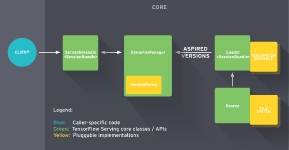What are different spring boot cloud projects

Spring Boot Cloud projects are a set of frameworks and tools provided by the Spring Framework ecosystem that enable developers to build cloud-native applications easily. These projects focus on simplifying the development, deployment, and management of distributed systems and microservices in a cloud environment. Here are some key Spring Boot Cloud projects: 1. Spring Cloud Config: Provides centralized external configuration management for distributed systems. It allows you to store and manage configuration properties in a central repository and retrieve them dynamically at runtime. 2. Spring Cloud Netflix: Integrates various Netflix components into Spring applications, ...


